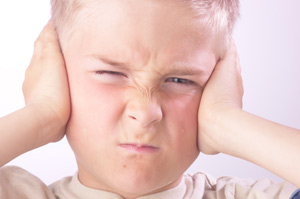ADHD - Attention Deficient Hyperactivity Disorders - Healthy Life Essex
Home » Articles » Wellbeing » Health Conditions » ADHD – Attention Deficient Hyperactivity Disorders
Learning and behavioural problems are becoming increasingly common

Attention Deficient Hyperactivity Disorders include poor concentration, learning difficulties, hyperactivity and behavioural problems. Research is increasingly implicating toxicity as underlying these conditions.
WWF-UK has identified an average of twenty-seven different chemicals in the bloods of UK adults and in November 2005 the Standing Committee of European Doctors warned
“Chemical pollution represents a serious threat to children…”
It is ironic that increased exposure to pollutants which raises nutrient requirements, should occur at a time when food technology and changes in agricultural practices have resulted in diets that are less nutritious than those of our ancestors.
It is unfair that children who suffer from these problems are often misunderstood and may be punished for behaviours which are beyond their control. Lack of understanding may make these children feel victimised and they may not get the support they need. Obviously, diet is fundamental as food additives often cannot be properly processed, and sugar and sweeteners may cause a rise in blood sugar which results in hyperactive behaviour followed by drowsiness. Stimulants such as fizzy drinks, tea and coffee can worsen the problem. Being aware that a child may have a medical condition and seeking the appropriate help is very important. Drugs, such as Ritalin, are routinely used but have not fared so well in trials as nutritional supplements. Ritalin is a diluted form of cocaine. It can sedate hyperactive children but does not address learning difficulties and can make it even more difficult to concentrate. It has been shown that children who were treated with Ritalin have an increased risk of developing schizophrenia or dependency on recreational drugs when older.
Dietary intervention, specialised supplements, in combination with herbal and homoeopathic treatments can be very helpful alternatives in the treatment of ADHD.
Dr Daniel Amen in the USA has identified six different categories of Attention Deficit Disorder (ADD) and founded the Amen Clinics which specialise in treating children with such problems.
Type One:
Classic ADHD
This is characterised by inattention, distractibility, poor organisational skills, hyperactivity, restlessness and impulsivity.  There is often a history of colic and restlessness in babyhood, noisy behaviour and low self-esteem. Brain scanning has revealed decreased activity during a task requiring concentration in a part of the brain called the prefrontal cortex (PFT). The prefrontal cortex is responsible for focus and impulse control. Dr Amen has found that this type of ADHD is linked to low levels of the brain chemical dopamine, which is involved in motivation, attention span and focus. Certain supplements, such as L-tyrosine, can encourage the body to make more dopamine. (Symptoms of dopamine deficiency may also include an under-active thyroid gland, low blood pressure, low body temperature with cold extremities and restless leg syndrome.)
There is often a history of colic and restlessness in babyhood, noisy behaviour and low self-esteem. Brain scanning has revealed decreased activity during a task requiring concentration in a part of the brain called the prefrontal cortex (PFT). The prefrontal cortex is responsible for focus and impulse control. Dr Amen has found that this type of ADHD is linked to low levels of the brain chemical dopamine, which is involved in motivation, attention span and focus. Certain supplements, such as L-tyrosine, can encourage the body to make more dopamine. (Symptoms of dopamine deficiency may also include an under-active thyroid gland, low blood pressure, low body temperature with cold extremities and restless leg syndrome.)
The same part of the brain is involved in filtering out distractions. However, in patients with Type One ADHD this filtering mechanism is under-active and distractibility such as noise becomes a real problem. Under-activity of the PFC also results in emotional suppression and reduced impulse control, and children may be accused of being cheeky or not thinking before they act. Exam and social anxiety may be indicators of problems in the PFC as situations that require concentration and rapid thought are dependent upon this area of the brain, and in type One ADHD there would be difficulty activating the PFC under stress and the person may go ‘blank’. Internal supervision goes awry leading to untidiness, procrastination and poor time management.
Type Two:
Inattentive ADD
Many people falling into this category remain undiagnosed but are accused of being lazy, dreamy and unmotivated. They may be lethargic and there is no hyperactivity associated with this type of ADD. More girls than boys fall into this category. Decreased activity in both the PFC and temporal lobes has been found by Dr Amen by SPECT imaging.
Type Three:
Over-Focused ADD
Type Three ADHD is frequently found in the children or grandchildren of alcoholics and drug abusers. Excessive activity has been found in the area of the brain that allows a person to switch from thought to thought – a bit like changing gear in a car- but when overactive the  person can get locked into repetitive negative thoughts or behaviours. This part of the brain is responsive to the brain chemical serotonin. When serotonin is low we find it difficult to sleep and feel depressed. This is why Prozac has been used as a treatment for Obsessive Compulsive Disorder. Natural treatments aimed at increasing serotonin levels, such as herbs and supplements, are helpful in treating this form of ADD.
person can get locked into repetitive negative thoughts or behaviours. This part of the brain is responsive to the brain chemical serotonin. When serotonin is low we find it difficult to sleep and feel depressed. This is why Prozac has been used as a treatment for Obsessive Compulsive Disorder. Natural treatments aimed at increasing serotonin levels, such as herbs and supplements, are helpful in treating this form of ADD.
Dr Amen has found inflammation in the brains of some children with Type Three ADD which could be due to toxins. People more susceptible to the effects of environmental toxicity may have a genetic weakness in liver detoxification. Before we were exposed to toxic pollutants this would not have been a problem. Unlike the other types of ADHD, this group may require a diet lower in protein as protein can enhance focus and may worsen symptoms.
Gilles de la Tourettes Syndrome
Characterised by motor and vocal tics, TS is frequently associated with Type Three ADD. Dr Amen has found specific abnormalities in the brains of TS patients and multiple genetic abnormalities in genes which control dopamine metabolism.
Type Four:
Temporal Lobe ADHD
Severe behavioural problems characterise this type of ADHD. There is mood instability, learning disabilities, poor memory, aggression, sensitivity to slights, mild paranoia and bad temper. The person may have violent thoughts towards himself or others. Dr Amen has  identified decreased activity in both the temporal lobes and the PFC during concentration tasks. This type of ADHD can run in families and carries an increased risk of violence and suicide. There is nearly always a history of head injury. Past head injuries can be treated by homoeopathy and flower essences. Cranial osteopaths regard the wearing of orthodontic braces as inflicting a chronic form of head injury due to compression of one of the bones of the skull. Cranial osteopathy and the homoeopathic remedy Sycamore Seed can help with this. The temporal lobes are involved in memory, emotional stability, learning, temper control and socialisation. Temporal lobe problems result in language difficulties, miscommunication, reading disabilities, mood instability, unpredictability, problems interpreting facial expressions, intonation, recognising rhythms, musical appreciation and visual learning. Impairment in the temporal lobes causes considerable social disadvantage and it is my suspicion that this part of the brain is damaged in autism. Abnormal activity in the temporal lobe can also be associated with epilepsy. It is possible to use homoeopathy to calm this part of the brain, and supplements to help with memory problems in this group. Gingko biloba is a herb which improves the circulation and has been shown to improve focus, energy and memory.
identified decreased activity in both the temporal lobes and the PFC during concentration tasks. This type of ADHD can run in families and carries an increased risk of violence and suicide. There is nearly always a history of head injury. Past head injuries can be treated by homoeopathy and flower essences. Cranial osteopaths regard the wearing of orthodontic braces as inflicting a chronic form of head injury due to compression of one of the bones of the skull. Cranial osteopathy and the homoeopathic remedy Sycamore Seed can help with this. The temporal lobes are involved in memory, emotional stability, learning, temper control and socialisation. Temporal lobe problems result in language difficulties, miscommunication, reading disabilities, mood instability, unpredictability, problems interpreting facial expressions, intonation, recognising rhythms, musical appreciation and visual learning. Impairment in the temporal lobes causes considerable social disadvantage and it is my suspicion that this part of the brain is damaged in autism. Abnormal activity in the temporal lobe can also be associated with epilepsy. It is possible to use homoeopathy to calm this part of the brain, and supplements to help with memory problems in this group. Gingko biloba is a herb which improves the circulation and has been shown to improve focus, energy and memory.
Type Five:
Limbic ADD
Depression and low energy characterise this form of ADD. There is the decreased PFC activity observed in other forms of ADHD but also an over-activity in another part of the brain called the limbic system. Generally the less active the limbic system, the more positive the state of mind. In this type of ADHD there is over-stimulation resulting in depression, lowered motivation and negativity. Limbic abnormalities also adversely affect eating and sleeping cycles and the limbic system may be linked to some eating disorders. This may be due to an underlying problem with liver detoxification which results in a build-up of something called homocysteine. Homocysteine has been in the news lately as it is a significant risk factor for heart disease and Alzheimer’s.
Type Six:
Ring of Fire ADHD
Anger, aggression, hypersensitivity, frequent mood changes, rigidity of thought, unkind behaviours, excessive talkativeness, impulsivity and anxiety underlies Type Six ADHD. On a scan it resembles a ring of hyperactivity or inflammation around the brain. 5HTP and St John’s Wort usually make this type of ADHD worse but fish oils can have a calming effect. Herbal anti-inflammatories may prove useful as well.p
Treatments
A healthy, appropriate diet is essential. (See Changing the Diet the Natural Way to Cope with ADHD)
All ADHD types function more effectively on a diet which is higher in protein and lower carbohydrate although Type Three need to have more carbohydrate than the other groups.
A good intake of water is necessary as the capillaries in the brain dilate when dehydrated. In prolonged dehydration the cells shrink and children have shown improved IQ scores when drinking more water. Healthy fat intake is important as the brain contains a high proportion of fat. Rat studies demonstrated an increase in serotonin and dopamine levels when eating diets rich in fish oils.
Exercise
All ADHD types benefit from intense aerobic exercise and this is especially true of Types One, Two, Three and Five. Exercise not only boosts blood flow to the brain, but also helps balance brain chemicals.
If your child displays any of the symptoms mentioned, seek help and advice from a health professional as soon as possible. Quite often, small changes in diet, lifestyle and the addition of supplements can have tremendous results very quickly.
by Eve Gilmore
M.Sc (Hons) Natural Medicines, N.D., Dip I.O.N., L.C.Hom., C.B.A.K., Dip Couns., Certified Metabolic Typing Advisor (Intermediate). Naturopath, Homoeopath & Clinical Nutritionist
ARC Healthcare
.
